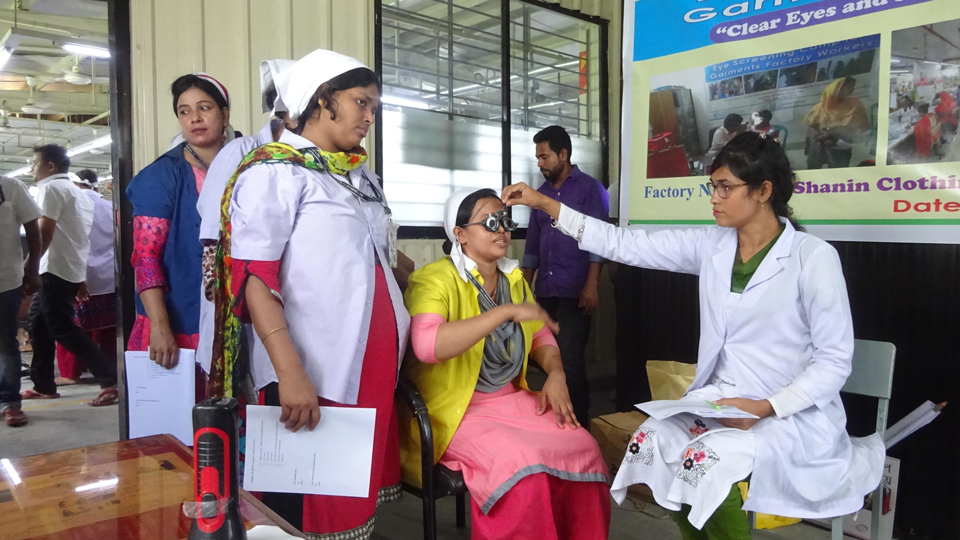Addressing near vision impairment could reduce poverty in female garment workers, says charity
Orbis International released the findings to mark International Women’s Day

08 March 2022
Women garment workers in Bangladesh are at a heightened risk of poverty due to lack of eye care even when other factors are accounted for, according to Orbis International.
Addressing near vision impairment that leads to lower monthly salaries for female garment workers could reduce poverty and gender inequality in the country, the charity said.
Orbis has revealed that female garment workers suffer from high rates of near vision impairment, which was associated with earning a lower monthly salary, even after adjusting for factors including years on the job and daily working hours. The findings are particularly pronounced in rural areas.
Half of Bangladesh’s four million garment workers are women, and the country is home to the second largest garment industry in the world, after China. High rates of near vision impairment are already present among women aged 30-35.
The nature of garment work requires the ability to see up close, making good near vision essential for those working in the industry. Garment production accounts for over 80% of Bangladesh’s export earnings.
The research was conducted in 2019 by Orbis Bangladesh and Nari Uddug Kendra, a non-governmental national women’s development support organisation. Free eye health screening and service delivery for female garment workers took place at two urban and two rural factories.

Orbis highlighted that fighting preventable vision loss in industries with a high proportion of female workers is a way to combat the adverse economic impact of gender inequality.
The report, published in the Asia Pacific Journal of Ophthalmology, highlighted that solutions including workplace screenings and the provision of glasses could reduce wage inequality, and in turn reduce rates of poverty.
Women and girls make up 55% of people with vision loss globally, and women often require correction for near vision loss at an earlier age than men.
Munir Ahmed, country director for Orbis Bangladesh, said: “Given that women constitute the majority of workers in the garment industry globally, the study offers evidence that increasing access to quality eye care can help increase earnings among female workers and has the potential to pull more women out of poverty.”
He added that the “findings and proposed solutions are relevant across other industries with a high proportion of female workers as well.”
Treating near vision loss
$70 is equivalent to six weeks of income above the World Bank’s poverty line. Based on UNICEF estimates that the annual cost to raise a child in a developing country is $900, $70 is also sufficient to cover nearly a month of expenses for one child.
Source: Orbis International
Lead image: A female garment worker in Bangladesh is screened during the study in 2019
Advertisement


Comments (0)
You must be logged in to join the discussion. Log in